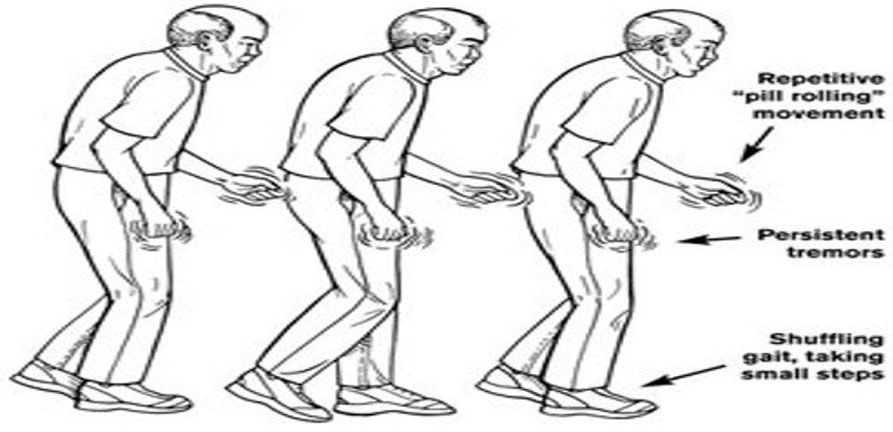Parkinson’s disease is classified as a movement disorder. This disorder progresses slowly and causes more and more discomfort. The very first signs seen are unexplained weakness. It slowly progresses to difficulty in walking and finally stiff muscles. Well, some others may experience tremor of the head and some others may experience tremor of the hand.
What are the symptoms?
The most common symptoms experienced by individuals in the early stages of developing Parkinson’s disease are:
- They experience slowness of all the voluntary movements. The most common movements affected are rolling over in bed or something as plain as walking.
- Some other movements that could be affected are, blinking of eyes or decreased facial expression. It could also impact your speech.
- This disease could also impact your gait and posture. Mainly it affects the swinging of your arms.
- Some patients may face difficulty in rising from a sitting position while some others may face unsteady balance.
- At later stages, there may be symptoms of swallowing problems and lightheadedness or fainting.
It is important to note that the early symptoms are generally mild and are difficult to detect. They progress gradually and are seen distinctly at a later stage. Notice your handwriting, you might notice the tremors immediately. When the disease progresses, it interrupts daily activities and impacts the social life of these individuals.
The most common things you should understand are:
Muscle rigidity
Muscles are known to relax when not working. The inability of these muscles to relax normally is the first step towards Parkinson’s disease. Most people suffering from this disease experience stiffness due to this. The most common stiffness is in the limbs. This stiffness is caused due to the uncontrolled tensing of the muscles that does not allow those parts of the body to move freely. Headaches are a common symptom. The affected muscles also pain.
Tremor
Tremors occur in the hands or arms or in the jaws or in the foot. The tremor typically includes the rubbing of the thumb against the forefinger. The disease generally impacts one side of the body or one limb. The tremor increases as the disease progresses. Note that not every person affected with this disease experiences tremor.
Slow movement
This involved loss of spontaneous activity. The main cause here is the brain’s slowness in transmitting the necessary instructions to those parts of the body where the movement is impacted. The condition is unpredictable and when hit, can be completely disabling. It is very stressful as one moment you are moving freely, and another moment you are completely steady.
Changes in gait
This involved inability of the patient to move their arms or swing them freely. They take short steps generally unstable steps and get frequent freezing steps. They could also experience difficulty starting or stopping. These individuals could also experience difficulty in taking turns and rounding corners.
Understanding and noticing these symptoms early could help your doctor with the treatment plans designed to stop it from progressing and affecting your daily routine lives.
For more information on Parkinson’s Treatment you can visit: www.neurologicalsurgery.in






